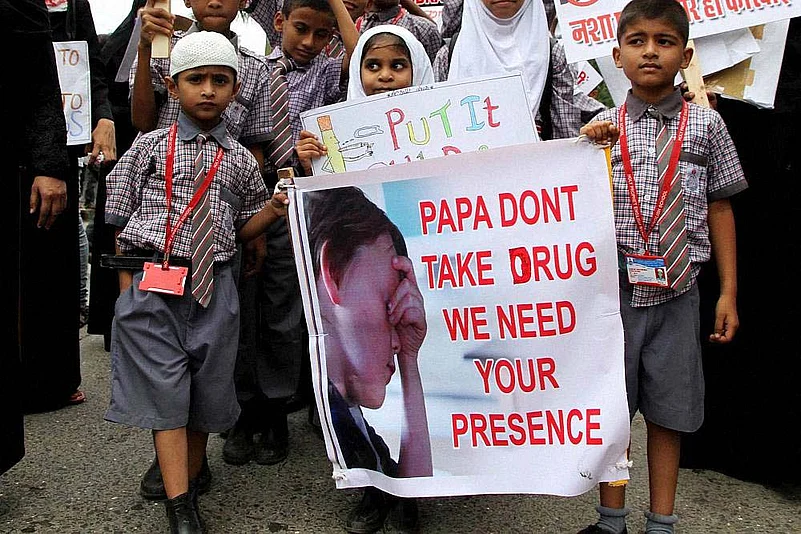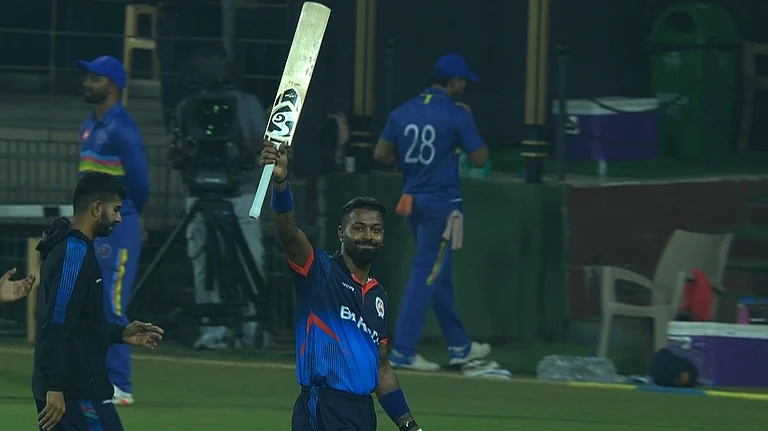The availability of harmful drugs is a problem with a disproportionate impact on adolescents and presents significant challenges for schools seeking to safeguard students from the physical and psychological damage drug use can cause. Drugs have penetrated in many well-known schools across the country and there are children who double up as peddlers to finance their addiction. “Many school kids who use drugs come to me for counselling sessions as that is the first step to recovery,” says Mumbai-based psychiatrist Dr Harish Shetty. “The most commonly used drug is cannabis as it is the cheapest. A 14-year-old boy was brought to me by his parents, who said he had once broken a glass door with his hand. He was a topper and was an excellent sportsperson. I got a urine test done. The parents were shocked on learning that their son was taking drugs. Kids are often spotted socialising with weed (cannabis) after a game of football and cricket. It is mainly the older kids who introduce the younger ones to this habit.”
Alka Kapur, principal of Modern Public School in Delhi’s Shalimar Bagh, says: “We depute teachers around the school premises during arrival and dispersal timings of children, to keep an eye on strangers who might be drug peddlers.” According to Mumbai-based psychologist Seema Hingorrany, kids from dysfunctional and broken families have a “tendency to get addicted to drugs because they feel drugs can numb them to pain and give them entry into a ‘cool’ peer group”. “They eventually get addicted to it. Awareness on the harmful effects of these drugs is important for our teenagers and we need to tell them what drugs do to their body and mind,” she adds.
ALSO READ: Weed Or Weedout
Talking about how awareness workshops are conducted in schools, psychiatrist Dr Avinash De Sousa says: “We conduct the worshops for classes 8-10. We talk to the students about various kinds of drugs and people who may lure them to take drugs. Sometimes we get somebody who was on drugs and has now recovered from addiction.”
Psychiatrists can help in first diagnosing the nature and severity of the problem. They need to identify whether it is just adolescent experimentation or a substance abuse problem. In the latter case, depending on the drug used, the children will have to go through detoxification, followed by medication, counselling and psychotherapy. In the former case, they will need just counselling and sometimes a little medication.
South Mumbai resident Shweta Rao never knew her daughter would start smoking weed regularly when she went to a college in Pune. “For my daughter, it all started with experimentation, but thank god she is out of it now,” she says. “Drug users feel drugs make them creative and help them think better. They start with weed, then move on to cocaine and other drugs. Before they realise it, their mental health gets affected. I made my daughter understand that nobody can control another person’s addiction, and she would have to take charge of her life. She attended a few sessions of Narcotics Anonymous, went through the 12 steps and then decided to quit.”
“There was a case of a high school boy who took drugs because he felt helpless seeing violent fights between his parents,” says De Sousa. “His father was an alcoholic. The kid was introduced to cannabis by his friends, who told him it would help him relax be able to perform better in academics. He eventually became dependent on it.”
ALSO READ: Hi Pot, Meet Kettle
“It starts more because of curiosity,” says Mumbai-based psychiatrist Dr Anjali Chhabria. “A highly intelligent kid who is curious or kids with attention deficit hyperactivity disorder (ADHD) are more vulnerable. A lot of these substances relieve anxiety and that’s why kids get hooked to them. They also use these substances to ‘chill’ together. A lot of them stop after a few experiments and some use it only to socialise, but quite a few get habituated. When such kids are brought for their sessions by their parents, they are resistant because they think they would be put in a rehab. But the psychiatrist assesses each case, finds out how it began—is it an untreated ADHD, is there anxiety or peer pressure, or other issues that the child is dealing with such as body image or depression? Once the primary cause is treated, then the need for the substance is eliminated. But, sometimes, if the kid is on hard drugs over a long period of time, then there could be physiological withdrawal, which makes medication and hospitalisation necessary.”
Often, children become addicted to drugs as a coping mechanism due to the stress and mental pressure they face in their lives. “Besides ensuring that they do not have access to drugs, we also pay attention towards ensuring that the students do not suffer from undiagnosed mental illnesses like stress, anxiety and depression,” says Kapur of Modern Public School. “We stay in touch with the students through a 24X7 helpline (Muskaraahat), where they talk freely about the mental or personal issues plaguing them. This gives them a platform to vent their emotions and confide in the mentors to remain stress-free and lead a happy, healthy life.”
ALSO READ: Meth-en-Scene
The students at Modern Public School also sign pledges that they won’t use drugs. Regular visits to rehab centres are also organised for students. “There are regular counselling sessions with parents when we see any child not performing well or in stress,” Kapur says. “Motivational videos are shown to students during the assembly. ‘Humanity Curriculum’, a special feature of our school curriculum, focusses on inculcating values in students to keep them at bay from vices.”
At Heritage Xperiential Learning School, there is a well-developed Social Emotional Learning (SEL) curriculum, through which a wide range of social issues, including use of drugs, are addressed. “We believe that when students have responsible adults they can open up to, they are less likely to indulge in harmful substances,” says Neena Kaul, the principal. “The SEL curriculum encourages students to openly discuss the challenges they face, and helps them to navigate the often complicated and challenging landscape of adolescence. The curriculum also creates an atmosphere of trust between students and teachers so an open channel of communication is always available.”
ALSO READ


























